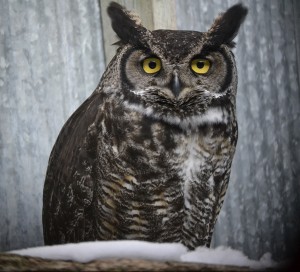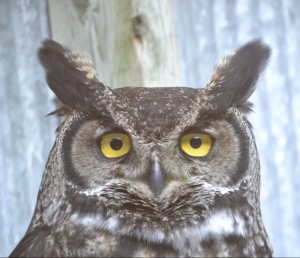 This is the final of a 6 part series on Training Molly the Morepork owl. The series follows Molly’s journey from a three-month-old owl that wouldn’t let me come near her to a bird that’s now used in live animal shows.
This is the final of a 6 part series on Training Molly the Morepork owl. The series follows Molly’s journey from a three-month-old owl that wouldn’t let me come near her to a bird that’s now used in live animal shows.
To see the first lesson click HERE.
In this lesson I want to talk about patience. Patience is really important in your toolbox when it comes to building your animal training skills. I’ve had people tell me that Positive Reinforcement doesn’t work. My understanding of this was that their animal did not learn a behavior in a time-frame, which was, determined by them (i.e. the human). The conclusion drawn was that positive reinforcement was not an efficient training tool.
Some of you might have seen my video about the first animal I ever trained: Bob the wedge tail eagle. If you haven’t seen it you can watch it HERE. The initial behavior I set out to train with Bob took me eight months to achieve. One reason behind this is that Bob and I were learning together. Bob had no schedule in the training.
 Bob’s only schedule was going about his day doing the most reinforcing thing available to him at any point in time. It was my job to communicate to Bob what my schedule was. It took me eight months to do this and make that a mutually beneficial schedule, but we got there in the end using positive and un-intrusive techniques.
Bob’s only schedule was going about his day doing the most reinforcing thing available to him at any point in time. It was my job to communicate to Bob what my schedule was. It took me eight months to do this and make that a mutually beneficial schedule, but we got there in the end using positive and un-intrusive techniques.
If you’re new to training practice patience. It’s okay if you don’t get the behavior as fast as you originally thought you might. Keep practicing and as importantly allow your animal to have lots of practice as well. The more practice the both of you have the more you will learn. To help develop you animal training skills be patient not only in individual training sessions but also with your animals learning pace (and your own).
ANIMAL TRAINING SKILLS
I hope you have enjoyed this lesson. I would love to hear what you think, so please feel free to leave a comment at the bottom of the page.
Good luck with all your training endeavors. Remember to practice your patience and I will see you next time – Ryan Cartlidge – Animal Training Academy.
Hi Ryan,
Another lesson well done and a great training success story. You have brought up two important points. Positive reinforcement does work, and the need for patience when training. Unfortunately when people do not have patience that is when they resort to negative styles of training or force.
I have often been asked “How long does it take to train a behavior?” The answer is that there are multiple factors to consider. What is the difficulty of the behavior, what is the skill level of the trainer, and what is the experience level of the animal? All of those things will affect how long it will take to train a behavior.
Patience is very important for your animal and your self. You need to move at the animals pace. Make sure you break down the steps into small easily achievable approximations. Read the behavior and determine when the animal is ready to move to the next step. It’s part of the communication loop. What is your animal telling you? As a trainer you may make mistakes and that’s ok as long as you learn from them. Be patient with yourself too. When I am having a bad session or feeling discouraged I remind myself what one of my mentors told me long ago. “The learning curve doesn’t go straight up!
Nice article.. thank you very much for spending the time to write this post.